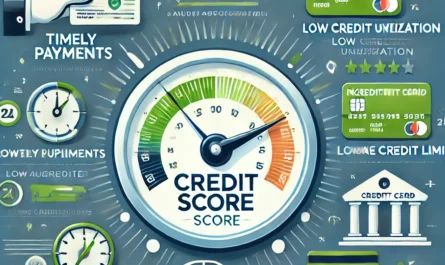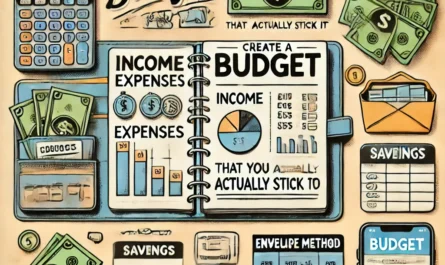In a world that constantly bombards us with advertisements, social media influence, and societal pressures to consume, cutting unnecessary expenses can feel like an uphill battle. The idea of trimming your spending might conjure up images of deprivation—saying goodbye to your morning coffee run, canceling nights out with friends, or making sacrifices that reduce your overall happiness. But here’s the good news: it doesn’t have to be this way.
Cutting unnecessary expenses without feeling deprived is entirely possible when approached with the right mindset and tools. By making thoughtful adjustments to how you spend and recognizing where your money is being wasted, you can free up financial resources without feeling like you’re missing out on the things you love. This guide will show you exactly how to do that.
Why We Spend More Than We Need
Overspending often stems from emotional and psychological factors, not just a lack of budgeting skills. Whether it’s the thrill of a sale, retail therapy after a tough day, or trying to keep up with societal expectations, many people spend more than they need to without even realizing it. Understanding why you spend and identifying your personal spending triggers can be a game-changer.
Many people experience what is known as “lifestyle creep,” where their expenses gradually increase as their income rises. This phenomenon makes it harder to save, even if you’re earning more than you did in the past. Emotional spending and lifestyle inflation are often fueled by a desire to feel successful or fulfilled—but there are healthier and more sustainable ways to achieve that.
The Importance of Identifying “Wants” vs. “Needs”
Before you can start cutting unnecessary expenses, it’s critical to distinguish between your wants and needs. A “need” is something essential for your survival and basic well-being, such as food, housing, and utilities. On the other hand, “wants” are the non-essential things that improve your quality of life but are not crucial to your survival—like that daily latte or a gym membership you rarely use.
By categorizing your expenses, you can clearly see where your money is going and which areas can be reduced without impacting your quality of life. Once you differentiate between the two, you can begin to cut unnecessary expenses by focusing on eliminating or reducing your “wants” while maintaining a comfortable standard of living.
How to Cut Unnecessary Expenses Without Feeling Deprived
The key to cutting expenses without feeling deprived is to take small, manageable steps and focus on high-impact areas. Start with the low-hanging fruit—those expenses that can be reduced or eliminated without drastically changing your lifestyle.
- Start Small: Begin by eliminating or reducing one non-essential expense. It could be as simple as cutting down on takeout meals or reviewing your subscription services.
- Focus on High-Impact Areas: Identify the expenses that take up the largest portion of your budget. Can you reduce your housing costs by renegotiating your rent, refinancing your mortgage, or downsizing? Are there energy-efficient changes that can significantly lower your utility bills?
- Use a “Replacement” Strategy: Instead of cutting out enjoyable activities entirely, find cheaper or free alternatives. For example, replace your expensive gym membership with free YouTube workout videos, or swap costly dining out for a fun home-cooked meal with friends.
By gradually adjusting your spending habits, you won’t feel the sting of major cutbacks. Instead, you’ll begin to notice the rewards—more savings and less financial stress—without feeling like you’re sacrificing the things that bring joy to your life.
Breaking the Cycle of Emotional Spending
For many, emotional spending is a major contributor to unnecessary expenses. Whether it’s shopping to alleviate stress, boredom, or the need for instant gratification, spending on a whim often leads to regret.
To break the cycle of emotional spending:
- Recognize Your Triggers: Are you more likely to spend when you’re feeling down? Identifying emotional triggers is the first step in curbing impulsive purchases.
- Create New Coping Mechanisms: Instead of turning to shopping, find healthier ways to manage emotions, like exercising, meditating, or spending time with loved ones.
- Wait Before You Buy: If you feel the urge to buy something unnecessary, apply the 48-hour rule—wait two days before making the purchase. Often, you’ll find that the desire fades after the initial impulse.
By replacing emotional spending habits with healthier alternatives, you can reduce unnecessary expenses while maintaining your emotional well-being.
Budgeting: The Backbone of Smart Spending
A well-planned budget is the foundation of cutting unnecessary expenses. Budgeting doesn’t mean restricting yourself to a life of deprivation—it’s about being intentional with your money and ensuring that every dollar has a purpose.
- Set Clear Priorities: What are the most important things you want your money to achieve? Whether it’s saving for a home, a vacation, or an emergency fund, align your spending with your goals.
- Create a Flexible Budget: Your budget should account for fixed expenses (like rent) and discretionary spending (like dining out). By setting limits on non-essential categories, you give yourself the freedom to enjoy life while staying within financial boundaries.
Tracking Your Spending
You can’t control what you don’t measure. Tracking your spending helps you identify where money is being wasted and ensures you stay on track with your budget.
- Use Apps: Budgeting apps like Mint, YNAB (You Need a Budget), or PocketGuard can help you keep tabs on your daily expenses, categorize spending, and highlight areas where you might be overspending.
- Set Weekly Reviews: Take time each week to review your spending. This simple habit can prevent small purchases from snowballing into larger expenses.
Avoiding Subscription Fatigue
Subscription services, from streaming platforms to meal kits, have become a common household expense. While convenient, they can quickly add up.
- Review All Subscriptions: Make a list of every subscription service you’re paying for. Ask yourself: Are you using them enough to justify the cost?
- Cancel or Pause Unused Subscriptions: If you’re not using a service regularly, cancel it or pause your membership. Many services allow you to resume whenever you’re ready.
This approach not only helps cut unnecessary expenses, but it also ensures that you’re only paying for what truly adds value to your life.



